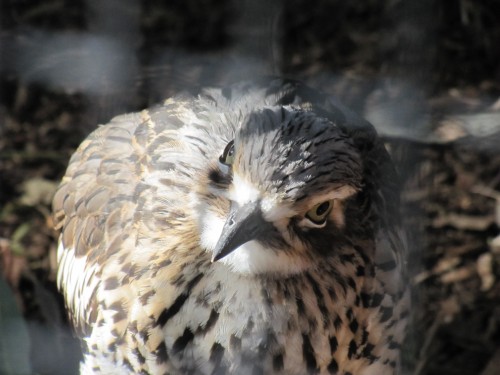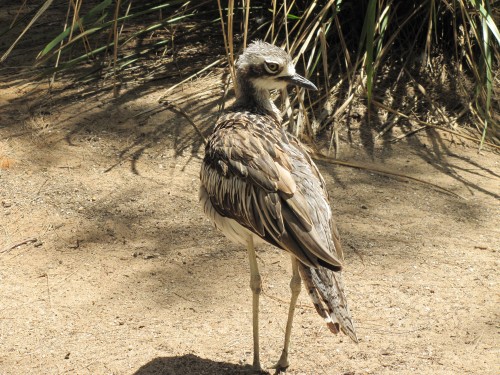Monarto Safari Park South Australia
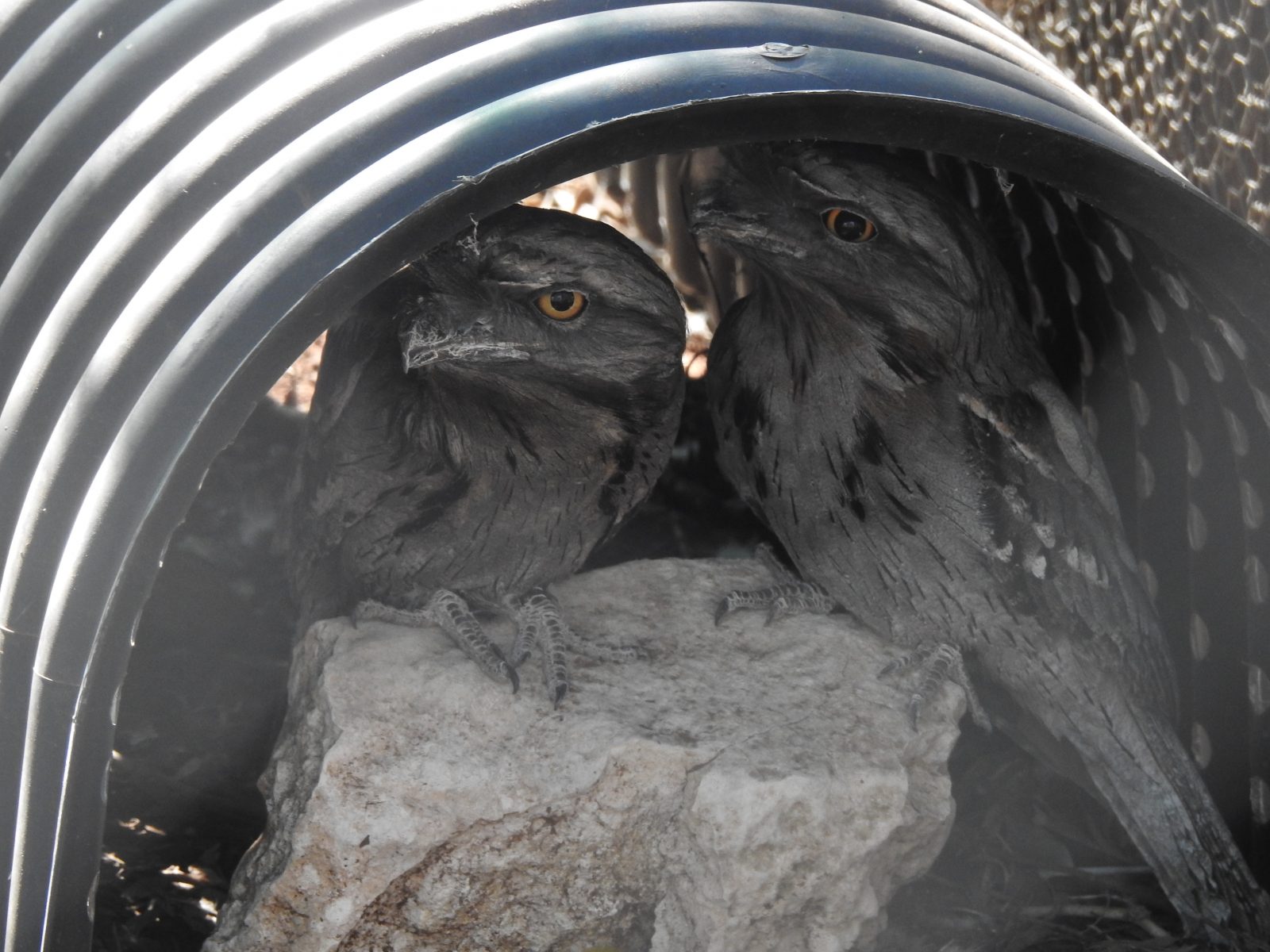
Captive birds
My local zoo is the Monarto Safari Park just fifteen minutes from my home in Murray Bridge, South Australia. This zoo is a part of the Adelaide Zoo which is about an hour’s drive from here. I am a Life Member and try to visit often. One of my recent visits was last year when I went for one of the many walks in the park. On one of these walks, there is a large aviary which has a few captive birds in it, including the Tawny Frogmouths shown above.
Tawny Frogmouths are a widespread nocturnal species in this area and it is found throughout Australia, including Tasmania. From time to time I occasionally hear or see this species in my garden. My family and I love hearing the soft call of this bird and we have fond memories of hearing and seeing them on various camping trips.
Bush Stone-curlew
Another mostly nocturnal species in the aviary at Monarto is the Bush Stone-curlew, shown in the photos below. Again, this widespread species is found in many parts of Australia except Tasmania. Campers in our more remote areas may have heard its haunting call at night. On the other hand, in some areas, the Bush Stone-curlew has adapted to life in towns and cities, especially in Queensland where it is commonly seen on golf courses and reserves.
Annoyingly, this is one species I have yet to see in its natural environment and I only have photos like those shown below which have been taken in zoos. I must get out and travel more.
Non-captive birds
As visitors to Monarto Safari Park join the many bus tours through the large park, it is possible to see many of our local native bird species. These include Emus, Australian Magpies, Little Ravens, Brown Falcons, Black Kites, Wedge-tailed Eagles, various parrot species, as well as smaller bush birds like the Willie Wagtail, woodswallows, thornbills, wrens and a variety of water birds when there is water in the creek flowing through the park.
The best way of seeing and photographing these birds is to stroll along the many walking trails through the mallee scrub land. Warning: try not to wander into the African Lion enclosure, or you might find yourself invited to lunch – with you on the menu. By the way: the zoo has four new lion cubs born only recently and they are now on display.
One easily seen species is the White-winged Chough which is about the size of our magpies and ravens. They are often seen in family groups of 10 – 15 and as they fly the white on their wings can easily be seen. On my walk to see the aviary birds I also saw one of their mud nests (see the last photo below).
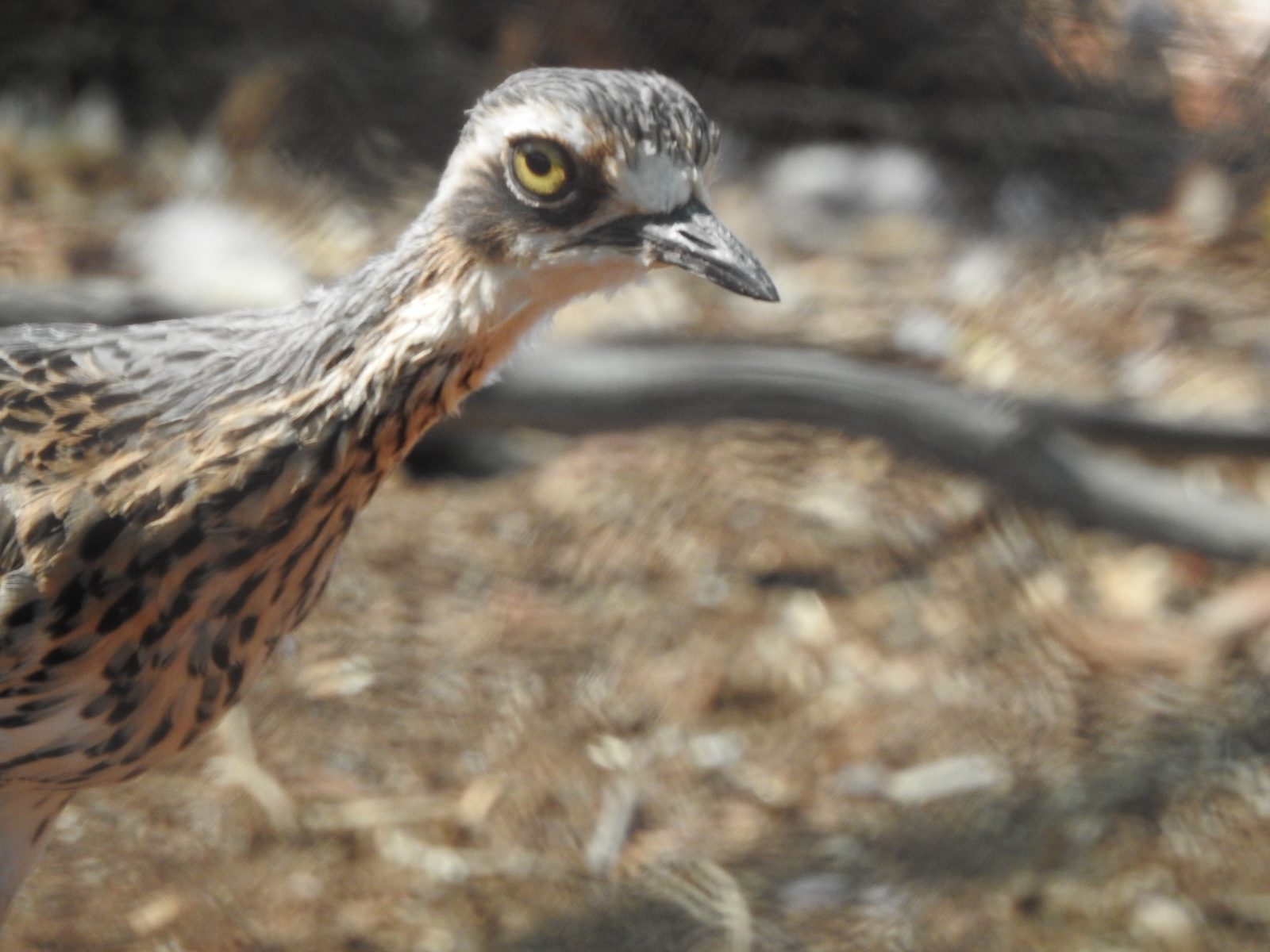
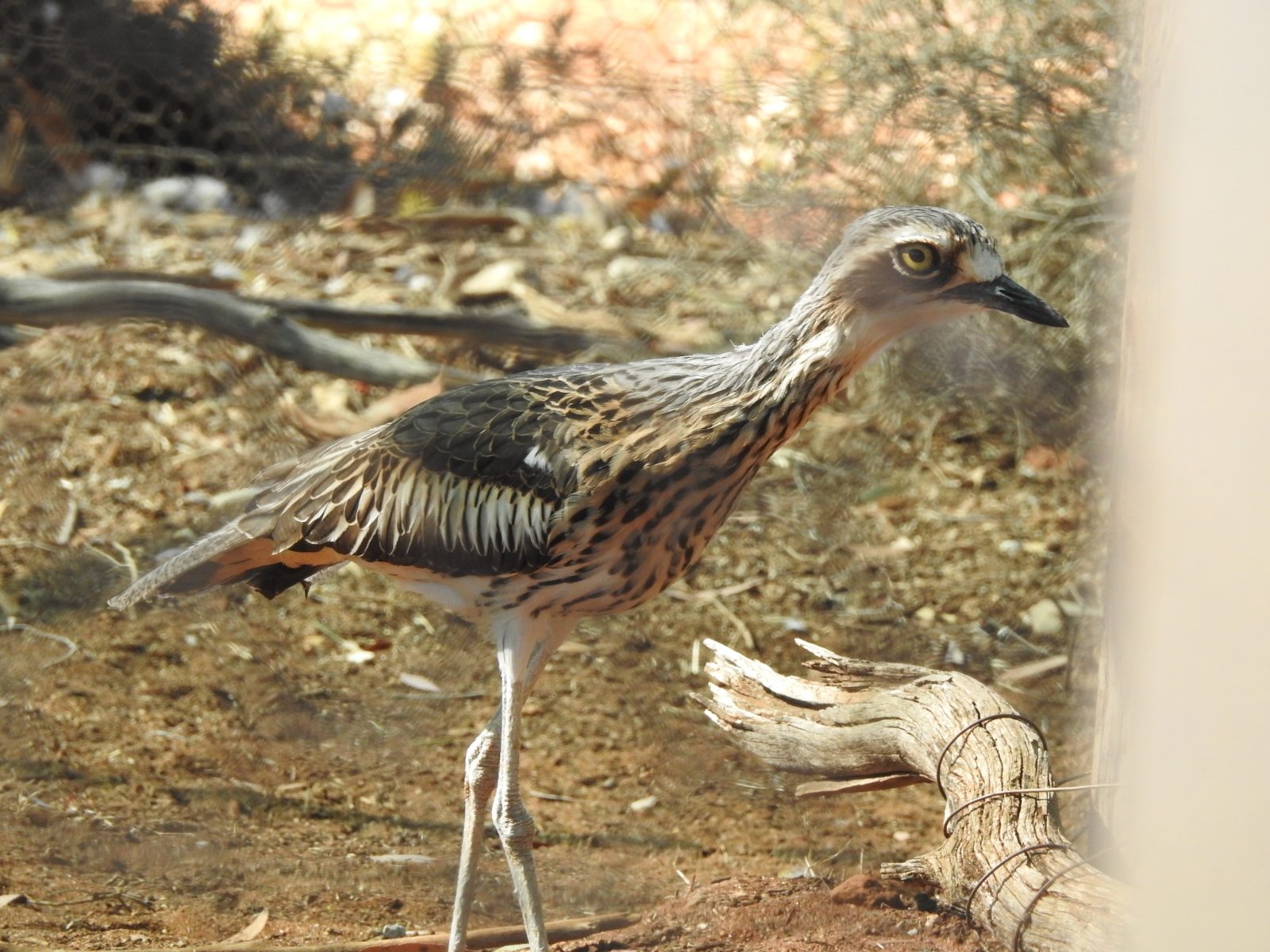
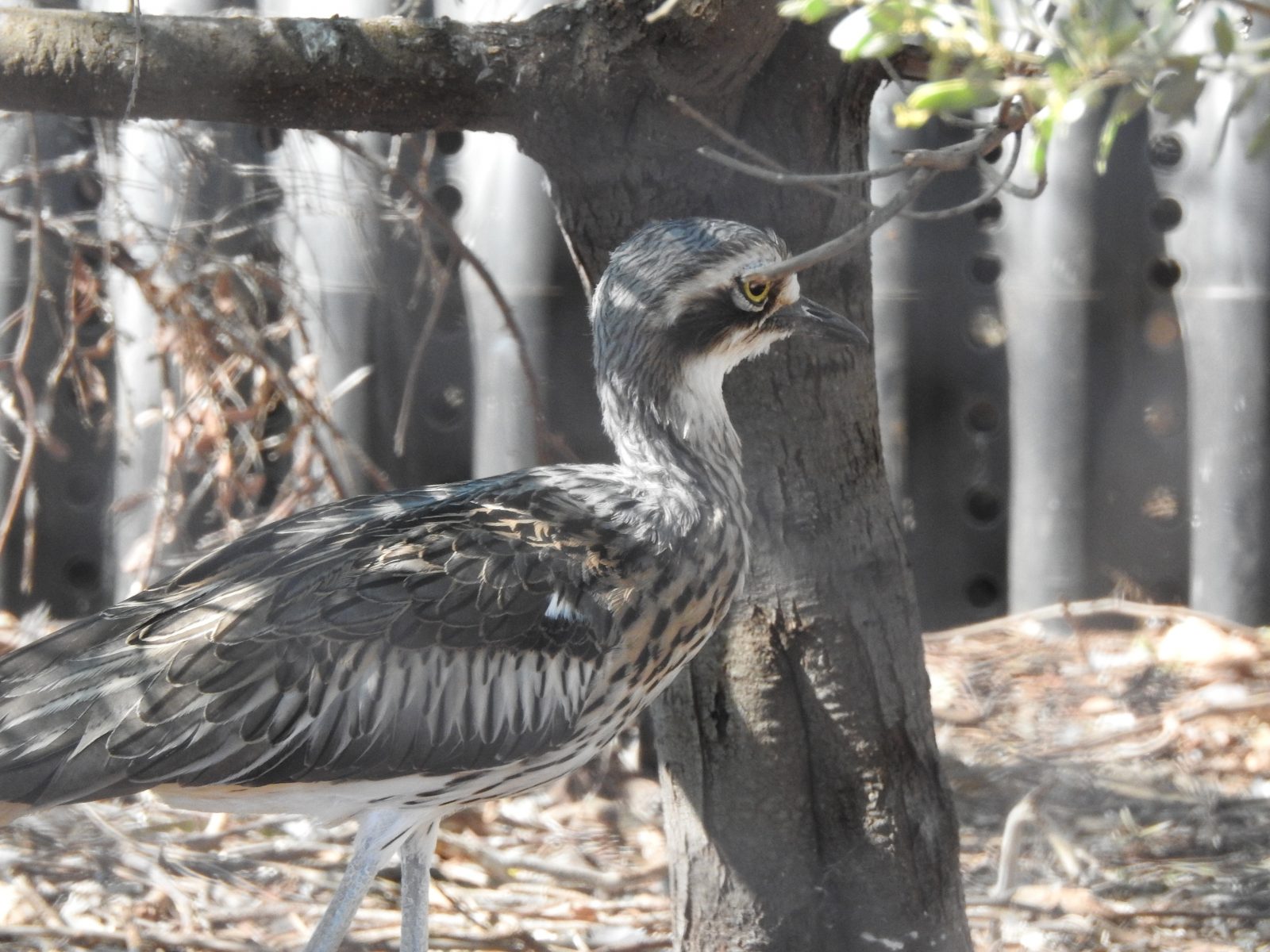
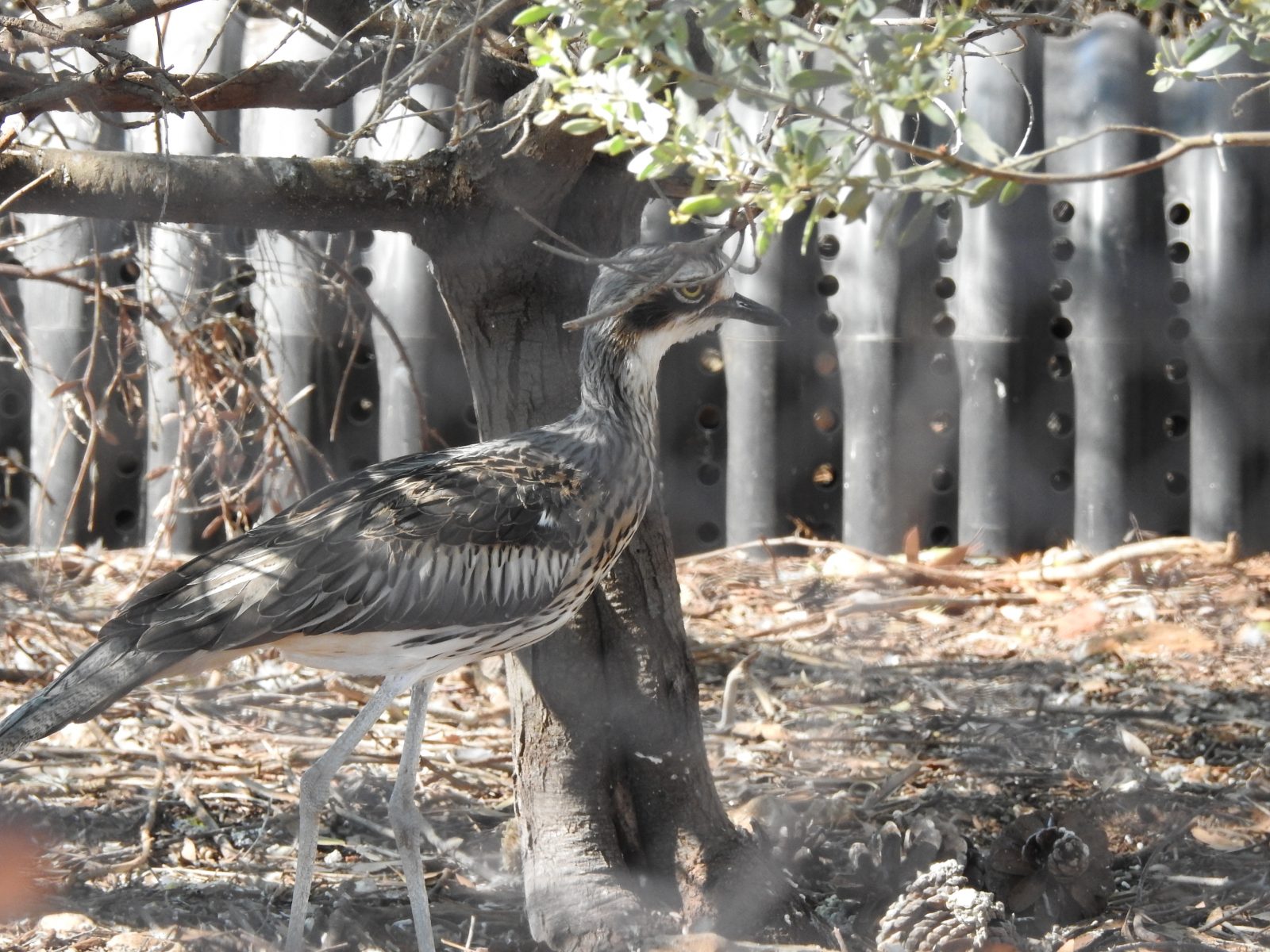
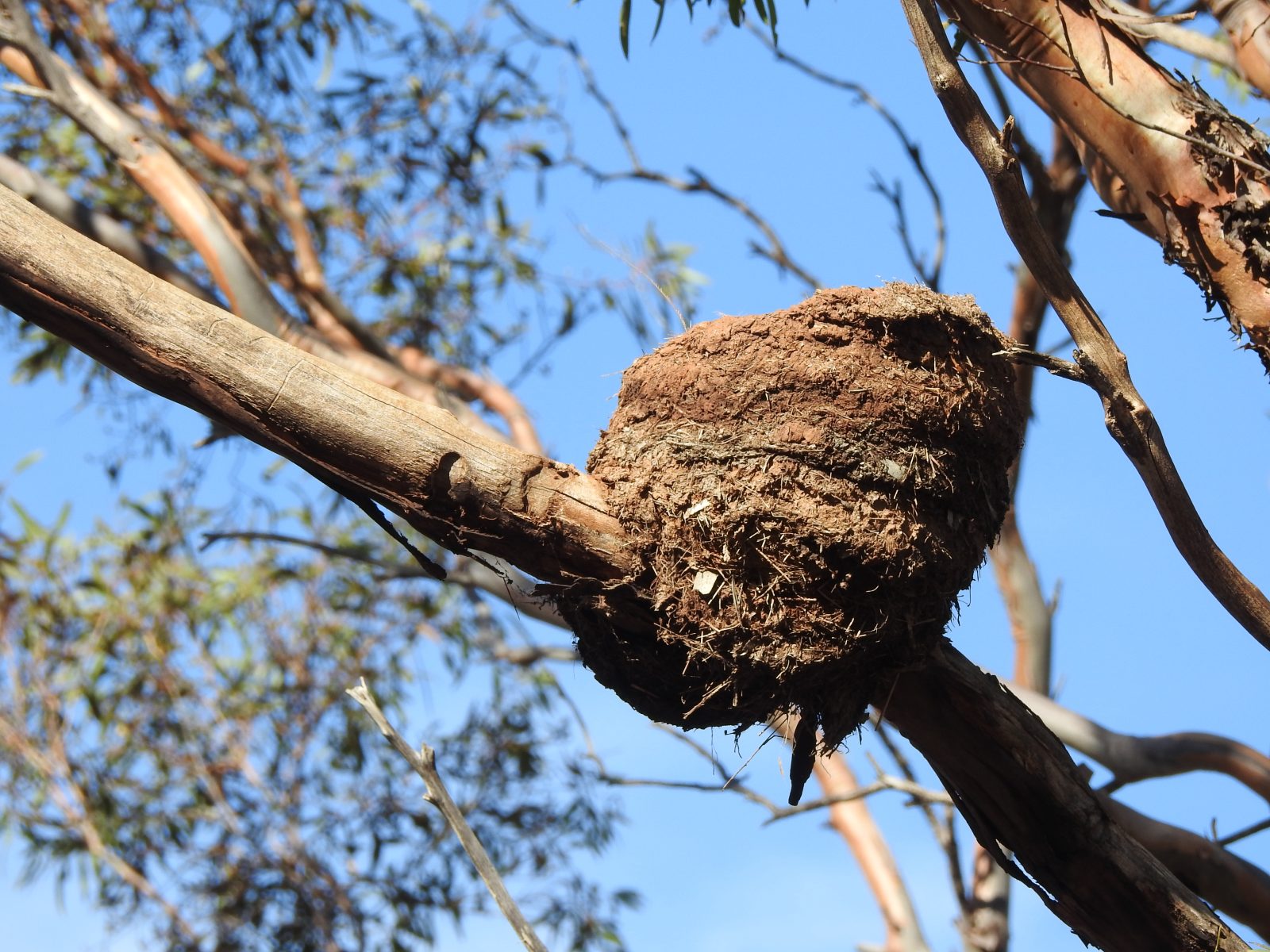
Bush Stone-curlew at the Australian Reptile Park
As I was meandering through the aviary section on our recent family visit to the Australian Reptile Park north of Sydney, I managed to get this interesting photo of a Bush Stone-curlew.
This individual is obviously quite relaxed near humans, with hundreds passing by its aviary on a daily basis. It fact, its pose almost suggests it is being curious about what I was doing, and came very close to investigate.
Or was it deliberately posing in a provocative way to get my attention?
Further reading:
You can see more photos and read more about this species by clicking on these related articles:
Bush Stone-curlew, Adelaide Zoo
One of the more interesting birds on display in the Adelaide Zoo here in South Australia is this Bush Stone-curlew.
Standing just over half a metre in height it is an imposing bird. This individual wanders around an open enclosure with Pelicans, a variety of ducks and some Cape Barren Geese. I am assuming it has had its wings clipped to keep it from flying off.
Although this species is widespread throughout a large range across Australia, I have yet to see this bird in its natural environment. It is mainly active at night and most observers’ encounters with the species would be only hearing its haunting, far-reaching “weer-loo” call at night.
Bush Stone-curlew
The Bush Stone-curlew is a species I have yet to see in its natural environment. They are not all that common here in South Australia, so I was pleased to see and photograph this bird recently in the Pelican enclosure at Adelaide Zoo. The white thing pointing at it in the top left hand corner of the photo is actually the beak of a pelican.
Bush Stone-curlews are found in the western half of Western Australia, across northern Australia and in eastern and south eastern Australia. In some parts of their former range they are now uncommon to rare in areas settled for farming or urban sprawl except in Brisbane suburbs where they seem to thrive.
Bush Stone-curlew, Adelaide Zoo, South Australia
I find the Bush Stone-curlew to be a fascinating bird. It seems so ungainly on its long legs, yet to see it run one has to conclude that it is very graceful in its movements.
While it tends to be a bird of the grasslands and open woodlands of rural western , northern, eastern and south eastern Australia, it has adapted to a more artificial lifestyle in urban areas, especially in Queensland.
Another intriguing aspect of this bird’s behaviour is its haunting call. The eerie ‘weee-ooo’ call carries far into the night – it usually calls at night – and is a well known sound of the Australian bush. To hear a recording of the call click here.
Sadly, I have yet to add this species to my list of birds seen in their natural environment.
The photos on this post were taken at the Adelaide Zoo.
